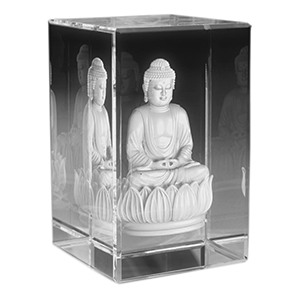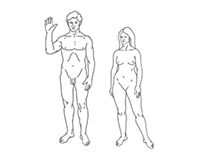A bubblegram (also known as ‘laser crystal,’ ‘3D crystal engraving,’ or ‘vitrography’) is a solid block of transparent plastic that has been exposed to intersecting laser beams in appropriately to induce a chemical reaction via heat or photonic excitation, creating bubbles or nodes where the plastic has a different index of refraction.
A complex or highly detailed image occupying a 5 cm cubic volume typically requires the creation of tens of thousands of such points.
Lasers for bublegrams are controlled by computerized opto-mechanical systems. Glass block bubblegrams of Russian origin entered international commerce as a novelty in the late 1990s, but high prices and simple design possibilities limited market penetration. In the early 2000s, a much less expensive, more visually appealing and highly diverse array of Chinese-made bubblegram novelties achieved wide commercial success in the United States, to the extent of becoming a fad: representations of monuments, corporate symbols, religious imagery, mythical creatures and nature scenes appeared in gift shops. There also exist companies which will take custom photographs of people, convert them to a heightmap, then render that as a bubblegram memento.
The Daily Omnivore
Everything is Interesting



Leave a comment